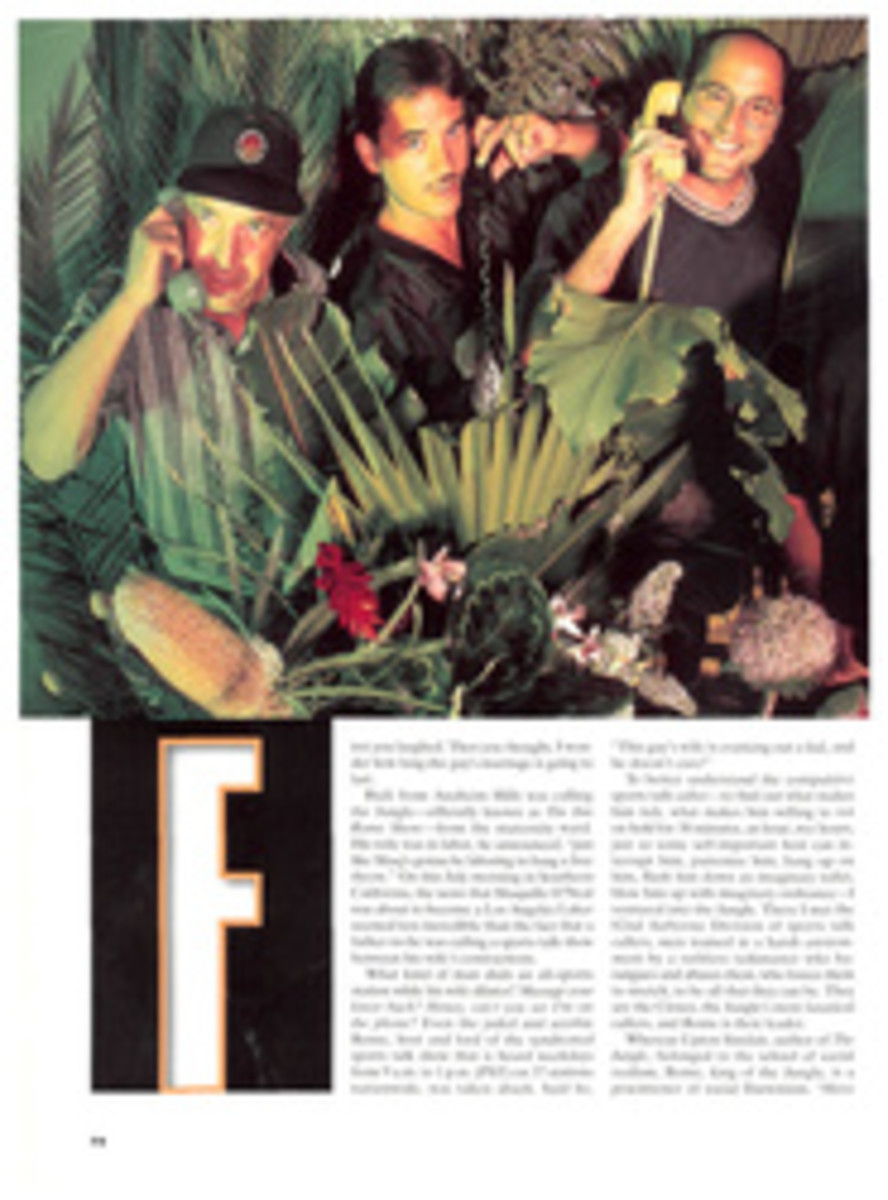
CARRY A BIG STICK THE BATS INSIDE THE NEW LOUISVILLE SLUGGER MUSEUM COULD TELL TALL TALES
When I was a sandlot baseball player, in the 1950s, my favorite
bat was a 32-ounce Ted Williams model. Brand-new, it was a thing
of beauty, the ash smooth and polished to a high gloss. Of
course it didn't take long for the bat to become scarred and
smudged. When it cracked, I tried to fix it with a nail and
masking tape, hoping to squeeze a few more hits out of it.
Every time I looked at the trademark, I felt a special pride,
because my bat was a Louisville Slugger, made by the Hillerich &
Bradsby Co. in the Kentucky city where I lived. The Louisville
Slugger was the bat of choice for every star in the big leagues
except those infidels (boo! hiss!) who perversely endorsed
Adirondack or some other obscure brand.
Those days were very much on my mind on July 16, when I attended
the grand opening of the Louisville Slugger Museum, the
centerpiece of H&B's new corporate headquarters and
manufacturing plant, at Eighth and Main near the Ohio River. The
museum is only about eight blocks from where the first
Louisville Slugger was produced in 1884. The building is easy to
find, mainly because it's the only one in town with a
120-foot-high bat leaning on it.
The guests of honor at the opening were 14 former big leaguers,
including nine of the 56 living members of the Baseball Hall of
Fame. But the star of stars was Williams, the only honoree who
received a standing ovation from the crowd of 600. Hobbled by a
couple of strokes, the erstwhile Splendid Splinter, now 78, was
helped onto the stage by his son, John Henry Williams.
Nobody in baseball history took hitting more seriously than Ted
Williams, who batted .344, with 521 homers, in his 19-year
career with the Boston Red Sox--a career that was interrupted
twice for military duty, during World War II and the Korean War.
Williams wanted only the best wood for his bats, and he
frequently came to Louisville to pick it out.
"When I first came to this factory, 60 years ago," Williams
said, "I was just like a young kid in a toy factory. I thought,
Boy, this is the greatest place I've ever been. My first trip
here I met a dear old guy named Fritz Bickel. He was one of the
lathe guys. He took a liking to me because he could see how
intent and interested I was. When I left, I gave him 10 dollars.
And I tell you, I got the best bats in the league from then on."
Across the stage Bobby Doerr, the Red Sox second baseman during
most of the years Williams was in leftfield, smiled and chimed
in. "I was with Ted that morning," Doerr recalled. "We had to
sit on the steps of the factory a half hour, waiting for it to
open. Ted wanted the lathe guys to pick out the wood with these
little knots and put it in his bats.
"In 1941, at that All-Star Game in Detroit where Ted hit that
famous home run, he ran into Mr. [Bud] Hillerich at the hotel.
He said, 'Mr. Hillerich, I want some 32-ounce bats.' And Mr.
Hillerich said, 'Ted, you can't get good wood with a bat that
light.' But Ted proved that the light bat was a big factor in
hitting. He was the first player I remember going to a light bat
like that."
They were talking about the kind of bat that I owned as a kid. I
could have sat there all night, listening to the legends, but
too soon it was time for the ribbon-cutting ceremony. After I
toured the museum, my only question was, What took H&B so long
to build it? It's the most interesting display of baseball
memorabilia west of Cooperstown. Where else can you see one of
the bludgeons used by Babe Ruth during his 60-homer year of
1927? The museum also has a short movie, The Heart of the Game,
which is a salute to the great hitters; a miniature ballpark
modeled after Camden Yards in Baltimore; and some interactive
exhibits. Baseball aficionados will be fascinated by the
Louisville Slugger's special relationship with the major
leagues. Behind every bat there's a story. For example, Stan
Musial wanted his bats to have such thin handles that he shaved
them down after receiving them from the H&B factory.
My only regret was that I didn't get a chance to sit down and
talk with Williams. I thought he might like to hear about the
bat that had meant so much to me as a boy. And I wanted to tell
him that I always made it a point to hold the bat with the H&B
trademark facing me, a cardinal rule in those days when baseball
was the only sport that really mattered and Williams was a god
who seemed at least as big as the bat that now leans against the
Louisville Slugger Museum.
COLOR PHOTO: JOHN LAIR/HILLERICH & BRADSBY The giant bat outside makes the museum easy to find.[Louisville Slugger Museum]

